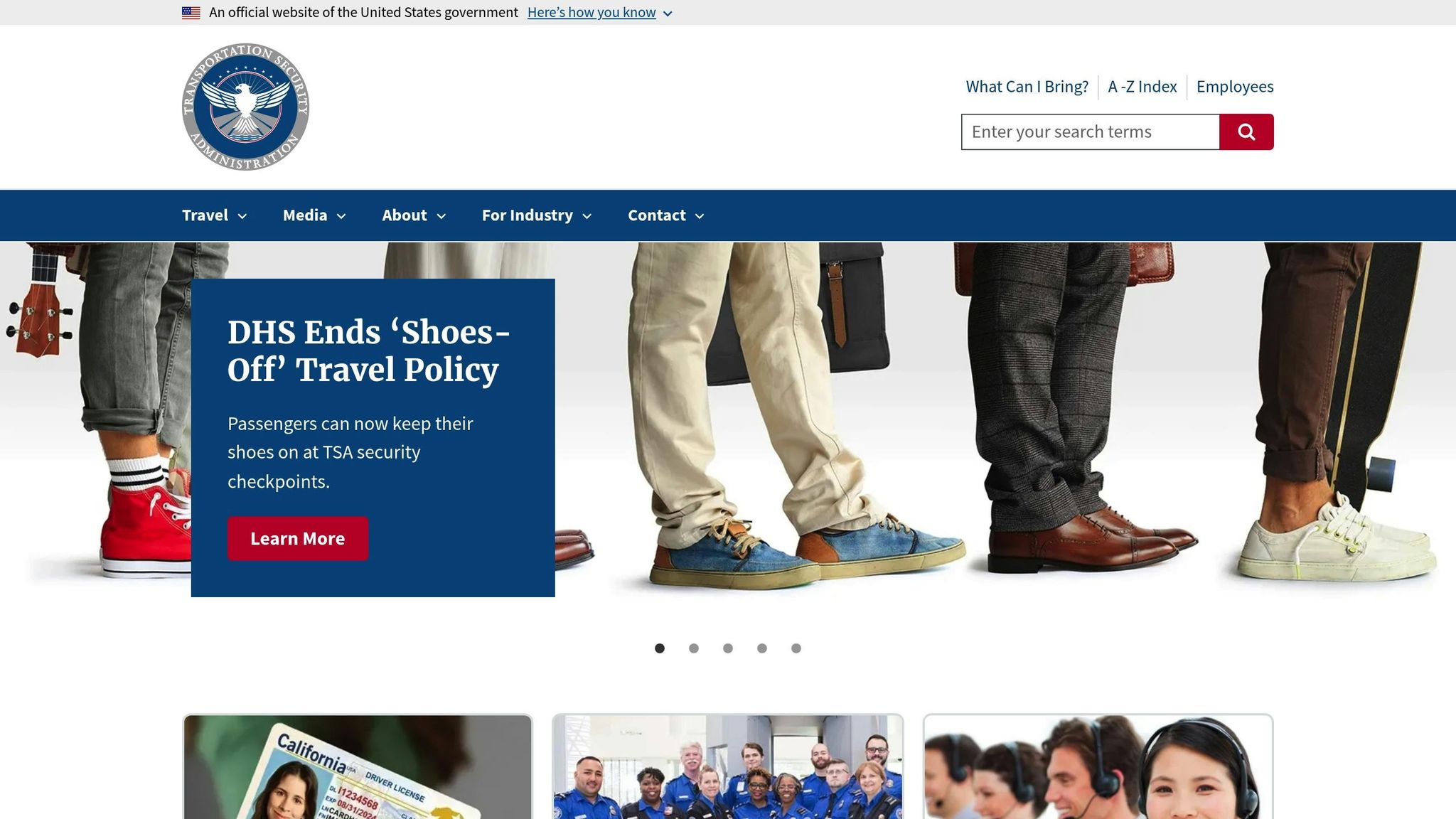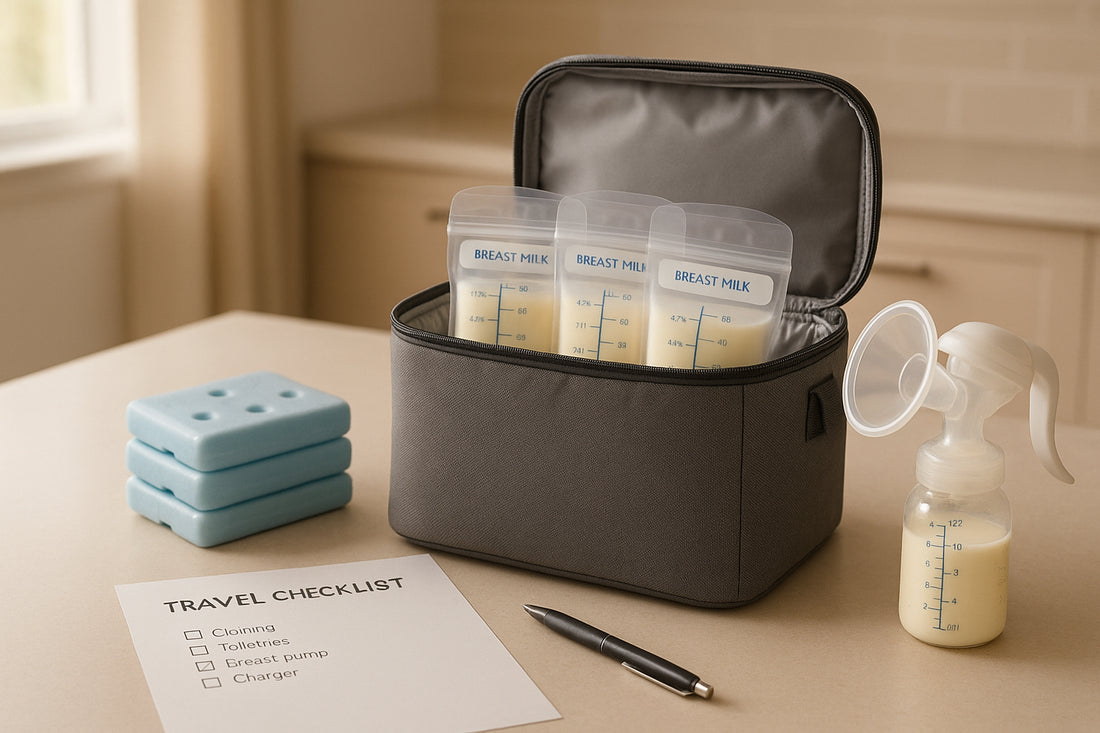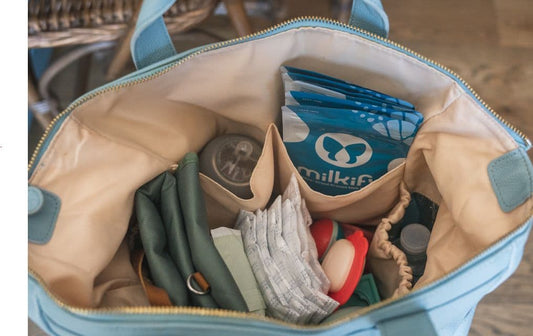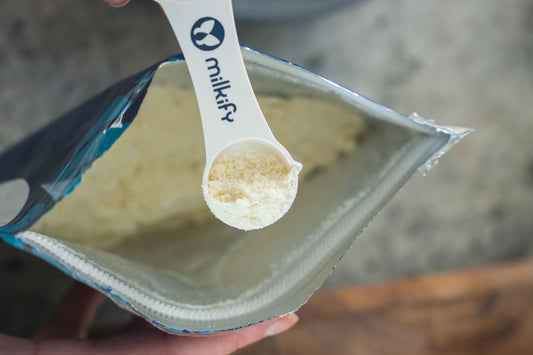Traveling with breast milk can feel overwhelming, but with the right preparation, it becomes manageable. Here's what you need to know:
- TSA Rules: Breast milk is exempt from the 3.4-ounce liquid limit. Inform TSA officers at security, and request alternative screening if you don't want the milk X-rayed.
- Storage: Use BPA-free bottles or breast milk storage bags. Label each container with the date and time of expression.
- Cooling Options: For short trips, insulated coolers with ice packs work well. For longer flights, consider specialized coolers/travel bags such as those sold by Milk Stork. If you use dry ice, you will need to contact your airline for approval ahead of time.
- Freeze-Dried Milk: Services like Milkify transform breast milk into a shelf-stable powder, eliminating the need for refrigeration or ice packs.
Whether you're relying on ice packs or exploring freeze-dried milk, proper planning ensures your baby’s nutrition stays intact while traveling.
HOW TO PACK AND TRAVEL WITH BREASTMILK | Cat Arambulo-Antonio
TSA Rules for Breast Milk on Flights

Navigating TSA regulations can make traveling with breast milk less stressful. The Transportation Security Administration (TSA) has specific guidelines to help parents and caregivers manage this process smoothly.
Breast Milk Liquid Limit Exemption
Unlike most liquids, breast milk is exempt from the standard 3.4-ounce limit for carry-on items. This means you can bring a reasonable amount of breast milk in your carry-on, regardless of container size.
"Breast milk is a medically necessary liquid and exempt from standard limits."
Importantly, your child does not need to be with you for this exemption to apply.
Security Screening Process for Breast Milk
When you reach security, let the TSA officer know you're carrying breast milk that exceeds the 3.4-ounce limit. You'll need to remove the milk from your bag so it can go through separate screening.
Getting Ice Packs and Cooling Items Through Security
Once you’re familiar with TSA rules, the next step is keeping your milk cold during the journey. You can bring gel packs, freezer packs, or regular ice packs in your carry-on. Make sure any frozen items are solid when you go through security. If you’re using gel packs for medical purposes, notify the TSA officer to avoid liquid restrictions. However, partially melted or slushy packs might still be subject to liquid limits.
Dry ice is another option, but it comes with specific rules. The FAA allows up to 5.5 pounds (2.5 kg) of dry ice per package, as long as it’s in a vented and labeled container. Each airline may have additional requirements, so be sure to contact your airline prior to travel as well.
"The FAA limits you to 5.5 pounds of dry ice that is properly packaged (the package is vented) and marked. Airline approval is required."
To ensure your milk stays cold, plan ahead. Use insulated packaging to extend the effectiveness of your cooling items, calculate how many ice packs you’ll need, and review your airline’s policies on refrigerated items. This preparation can help keep everything in perfect condition until you reach your destination.
How to Prepare and Pack Breast Milk for Your Flight
Traveling with breast milk takes some preparation, but with the right approach, you can ensure it stays fresh and safe. Focus on using reliable storage, keeping it cold, and selecting a cooler that fits your travel needs.
Choosing the Right Storage Containers
Safe breast milk transport begins with proper storage. Opt for bottles or bags specifically made for breast milk. These are usually crafted from BPA-free plastic and come with leak-proof seals that can handle the pressure changes during a flight.
Popular choices include Medela Breast Milk Storage Bags and Lansinoh Breastmilk Storage Bags, both trusted by parents. Storage bags are particularly handy for travel because they freeze flat, making them easier to pack and store. Plus, their shape allows for quicker thawing when needed.
Keeping Milk Cold Before You Leave
Maintaining the cold chain is crucial for breast milk. Freezing your milk in small portions not only makes thawing faster but also gives you flexibility in how much to use at a time.
Before heading out, transfer your frozen milk into a cooler bag with ice packs. This ensures the cooler is at maximum efficiency when your journey begins.
Picking the Right Travel Cooler
Once your milk is packed and pre-cooled, it’s time to choose a cooler that fits your travel timeline and milk volume. The cooler you pick should be spacious enough for your milk containers and ice packs while remaining portable.
Look for features like insulated linings, separate compartments, and easy-to-carry designs. Coolers with handles, compact sizes, and zippered access are especially convenient for air travel. If your trip is longer, consider thermal insulated bottles with vacuum seals or even electric coolers that can plug into your car’s power outlet.
To maintain a steady temperature, keep the cooler away from heat sources and minimize how often you open it. Place it in shaded areas or inside the cabin where the environment is more stable.
For an alternative option, freeze-dried breast milk might be worth exploring. Services like Milkify turn your milk into a shelf-stable powder, removing the need for temperature control entirely.
sbb-itb-5de392f
Freeze-Dried Breast Milk for Easy Travel
Traveling with breast milk just got a whole lot simpler. Freeze-dried breast milk is a game-changer for parents on the go, offering a hassle-free way to ensure your baby’s nutritional needs are met without worrying about refrigeration or spoilage.
Why Freeze-Dried Breast Milk Makes Sense for Travel
Freeze-drying turns liquid breast milk into a lightweight, shelf-stable powder that doesn’t need refrigeration. By removing about 90% of the milk’s weight through the gentle sublimation of water in a vacuum chamber, this process preserves nearly all of its nutrients. Even better, the powdered milk can stay fresh for up to three years.
Its compact form is ideal for carry-on luggage, and there’s no risk of thawing during transit. When it’s time to use, just mix the powder with warm water or sprinkle it over food, and you’ll have reconstituted milk that retains all of its original macronutrients. The freeze-drying process also stops the degradation that naturally occurs when water is still present in the milk.
"It preserves the structure of molecules in the milk, which impacts the taste and nutritional quality of the milk... The result after freeze-drying is a fine breast milk powder, which has all of the components of the breast milk without the water."
For parents looking to simplify travel while maintaining their baby’s nutrition, freeze-dried breast milk is a smart and practical choice.
FAQs
What should I do if TSA needs to screen my breast milk at airport security?
When you arrive at the security checkpoint, inform the TSA officer that you’re carrying breast milk. Usually, the milk stays in its container while being screened through an X-ray machine. However, if you’d rather avoid X-ray exposure, you can ask for an alternative screening method.
How do I keep breast milk safely chilled during a long flight?
To ensure your breast milk stays chilled during a long flight, use an insulated cooler bag paired with frozen ice packs. These can keep the milk at a safe temperature for up to 24 hours. For even better temperature control, you might want to use a thermal or gel-lined bag.
When passing through airport security, inform TSA that you're carrying breast milk. The good news? Breast milk is exempt from standard liquid restrictions, so you can transport larger quantities without any hassle. If you're searching for a more convenient, long-term storage option, services like Milkify can convert your breast milk into a shelf-stable powder - perfect for stress-free travel.
What makes freeze-dried breast milk a better option for air travel compared to traditional storage methods?
Freeze-dried breast milk is a game-changer for air travel. It's lightweight, compact, and doesn’t require refrigeration, making it incredibly easy to pack and completely TSA-friendly. Say goodbye to lugging around bulky coolers or dealing with messy ice packs - this option simplifies your travel routine in the best way possible.
Another major advantage? Its long shelf life. Freeze-dried breast milk can stay good for up to three years without spoiling, which means no stress about freshness during extended trips. Plus, it preserves the key nutrients, probiotics, and immune-boosting properties of breast milk far better than freezing or refrigerating. This ensures your baby gets top-notch nutrition, even when you're miles away from home.






